5 Search Results for: The permafrost and global food security
The Permafrost and Global Food Security

My first day in Spitsbergen brought a very special highlight. I was fortunate enough to come on a day that coincides with a visit by Professor Roland von Bothmer from the Swedish University of Agricultural Sciences, who also looks after public relations for the SVALBARD SEED VAULT.

You may vaguely remember hearing about this when it was set up in 2008, with the aim of storing samples of food seeds from all over the globe under super-safe conditions, deep under the permafrost of Svalbard.

You may also have heard of some damage to the entrance to the vault because of permafrost melting. Was climate change already threatening the very facility that should help ensure food security no matter what changes – climatic or otherwise – endanger the planet?
No way, says Prof. von Bothmer. The damage to the entrance to the tunnel which leads down to the subterranean vault has no effect on the operation of the vault itself, he says, and the reason for building this facility this far north and under this permafrost, is still valid. It’s thought to be one of the safest places on the planet, even in a rapidly warming world.

Access to the vault is very strictly controlled.

Human warmth affects the temperature inside. So there are only a few visits a year, often with visiting heads of state or the UN, as with the case last year. And very occasionally, a visiting journalist.
Professor von Bothmer is a man who loves his work and is dedicated to it. He has collected seed samples all over the world himself and considers himself very lucky to be involved in the Svalbard Seed Vault project, in a way the highlight of his professional activities to date. The idea of protecting crop diversity in a world where for one reason or another species are dying at an alarming rate, is one that inspires him.
The tunnel entrance is high above Svalbard airport. It’s cold outside today, but he warned me it would be much colder where we were going. We went into the entrance tunnel, where workmen are carrying out some maintenance and repair work. Then we went into the warmer “master control room” – well, the computer room – and changed into thermal suits.

They look hilarious, but I wouldn\’t like to go down into the vault without one.Minus 18 C. is thought to be the ideal temperature for storing seed material. So it was pretty “nippy” when we finally got into the main chamber, which has a complex cooling system in addition to the natural permafrost.
You go through a system of “air locks” to reduce any warm temperature impact from your body on the vault itself. It is still being extended into the hillside to increase capacity.

Seed samples are sent in from gene banks around the globe – we saw samples of Danish barley and some seeds from India, vacuum packed, ready for storage – for who knows how many hundred years?

The climate change crisis has given the vault increased relevance, even over the past two years, says the Professor. Even with “winners and losers”, areas being hit by drought, flooding, warmth, cold, new or changing pests and diseases, will need a diversity of crop types to cope. So this remote, icy area with its dearth of arable land and crops of its own, could provide the back-up seeds to feed the world of the future.
Svalbard Seed Vault
Arctic Council: business as usual with USA under Trump?
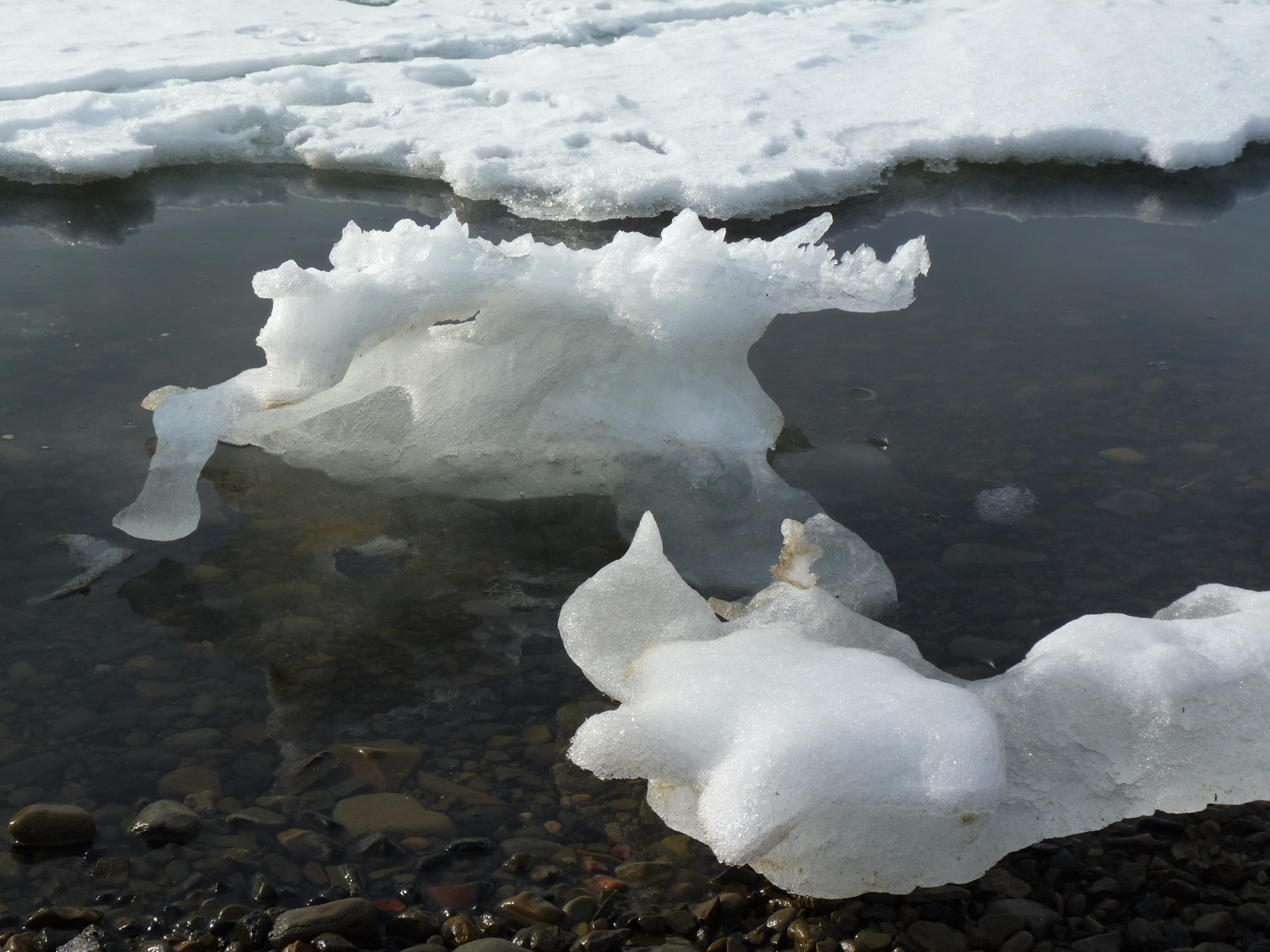
Dwindling sea ice (Pic: I.Quaile)
As the USA comes to the end of its two-year Chairmanship of the Arctic Council, the organization’s “Senior Arctic Officials” met in Juneau, Alaska, last week to prepare for a final ministerial meeting in Fairbanks in May 11th, before Finland takes over the chair. US Ambassador David Balton is currently Chair of the SAO. At a press briefing in Juneau on Friday, it comes as no surprise that one of the questions that interested journalists most was how US Arctic policy might change under the Trump administration and whether that was already happening.
Climate skeptics at the helm?
Given that the Arctic is one of the regions of the globe being affected most rapidly and dramatically by climate change, it does not seem unrealistic to imagine that the climate skeptical views of President Trump and some of his key advisors will have more than just a little impact on the high north.
President Trump’s environment chief Scott Pruitt recently hit the headlines when he again denied that global warming is caused by fossil fuel emissions. The incoming head of the key Environmental Protection Agency (EPA) told the American television channel CNBC he “would not agree” that carbon dioxide from human activity was the primary cause of global warming.
When Pruitt was attorney general in Oklahoma, he helped sue the EPA 14 times. He told CNBC that “tremendous disagreement” remained over human impact on the climate and said the Paris accord amounted to a “bad deal.”
When the foreign ministers of the eight Arctic Council states get together in May, it is US Secretary of State Rex Tillerson, former CEO of the energy giant EXXON, who should be the man in the chair. One of the three priorities of the US chairmanship has been climate change. An interesting combination. So will the ex fossil fuels chief be there?
“We have recommended to Secretary Tillerson that he attend the Arctic Council Ministerial. He is the Chair of the Council. We don’t have a decision yet, as Secretaries of State are busy people. But the last three times the Arctic Council met at the ministerial level, a US secretary of state attended. So it’s my hope that he will come. Certainly the government and people of Alaska would like him to be here.”
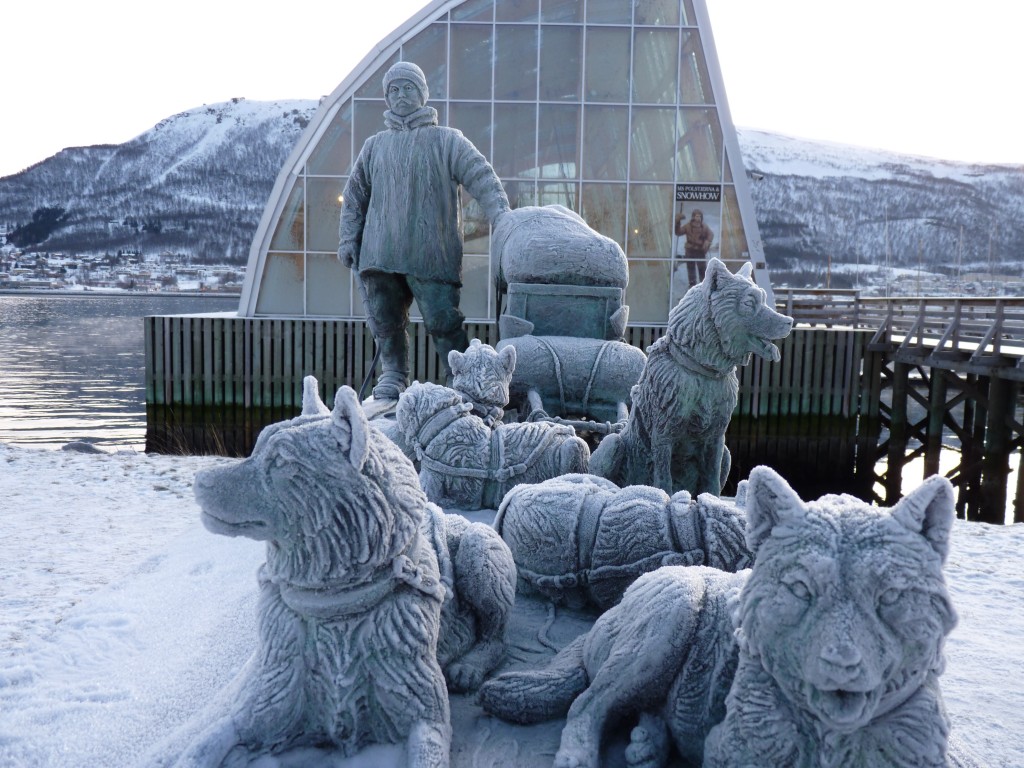
Polar exploration – close to the Arctic Council secretariat in Tromsö, Norway (Pic. I.Quaile)
Continuity or change of direction?
Drastic budget cuts affecting climate and environment and changes in personnel at the State Department and elsewhere in the administration were also on the agenda at the Juneau briefing (which was joined online by journalists around the world). So how is this affecting the work of the Arctic Council?
“So far I see no direct effect on participation in the Arctic Council either in the lead-up to our own ministerial or beyond, but the picture is not entirely clear yet,” said Balton.
“So far”, and “not yet” seem to be key words.
When it comes to whether and if so how US participation in the Arctic Council and US goals and priorities relating to the Council and to the Arctic have changed or may change under the Trump administration, Balton expressed optimism about continuity:
“I have been working on Arctic issues for the US government for the best part of 20 years. And what I can say is that US interests in the Arctic and our goals and objectives for the Arctic have not changed appreciably over time. There was a first statement of US Arctic policy issued during the Presidency of Bill Clinton. It laid out 6 basic goals of our nation in the Arctic. When George W. Bush became our President, they reiterated those very same goals, in the context of another Arctic policy statement that was put out. And when Barack Obama became President there was a question of whether the Bush administration policy would stand. And it did. It was reaffirmed during the Obama administration. And we built on top of the policy something known as the national strategy for the Arctic region. What all these documents have in common is more important than what separates them.”
Balton did accept that there had been changes of emphasis, but not in the fundamental view.
“The real interests of the United States in the Arctic have very much to do with the state of Alaska and its needs and interests, and keeping the Arctic a peaceful stable place is certainly a non-partisan issue in the United States.”

Frozen waves at Barrow, Alaska. (Pic: I.Quaile)
America first in the Arctic?
Presumably, as long as this fits with President Trump’s “America first” policy, all will be well. The question is how that plays out when other major Arctic players put the interests of their own countries first.
“One Arctic” was the overall theme of the US Chairmanship over the last two years. But when it comes to reconciling the geopolitical not to mention economic interests of Arctic states, cooperation might just become a little more tricky.
In September 2016, the International Security Advisory Board (ISAB), a Federal Advisory Committee established to provide the Department of State with a “continuing source of independent insight, advice, and innovation on scientific, military, diplomatic, political, and public diplomacy aspects of arms control, disarmament, international security, and nonproliferation” published a “Report on Arctic Policy” in response to a request to “undertake a study of Russia’s interests, intentions, and capabilities as it has been increasing its presence – both military and civilian – in the Arctic.”
Interesting times ahead.
The wind of change?
So far, the new administration has not turned its attention to the Arctic in particular, Balton told the journalists:
“There have been signals about climate change policy, but even those are not – at least not to me – clear yet. We do know that the Finns intend to highlight the Paris Agreement as part of their chairmanship program, but they have many other aspects they hope to highlight as well, including the sustainable development goals that the United Nations has announced.”
It remains to be seen whether the Trump administration will keep to the Paris Agreement or not. And when it comes to sustainable development in the Arctic, clearly changes in the climate will play a key role.
Between now and the end of the US Chairmanship of the Arctic Council in May, it looks as if Balton and his team will be able to carry on with “business as usual”.
“So the US Arctic Council Programme was developed in the last administration, and is just coming to fruition now. Of course we are in touch with the new administration, which I’m a member of, and for the most part now our guidance is to keep doing what we’re doing. That could change between now and May, but I don’t actually expect it will.”
The question will be what happens after that.
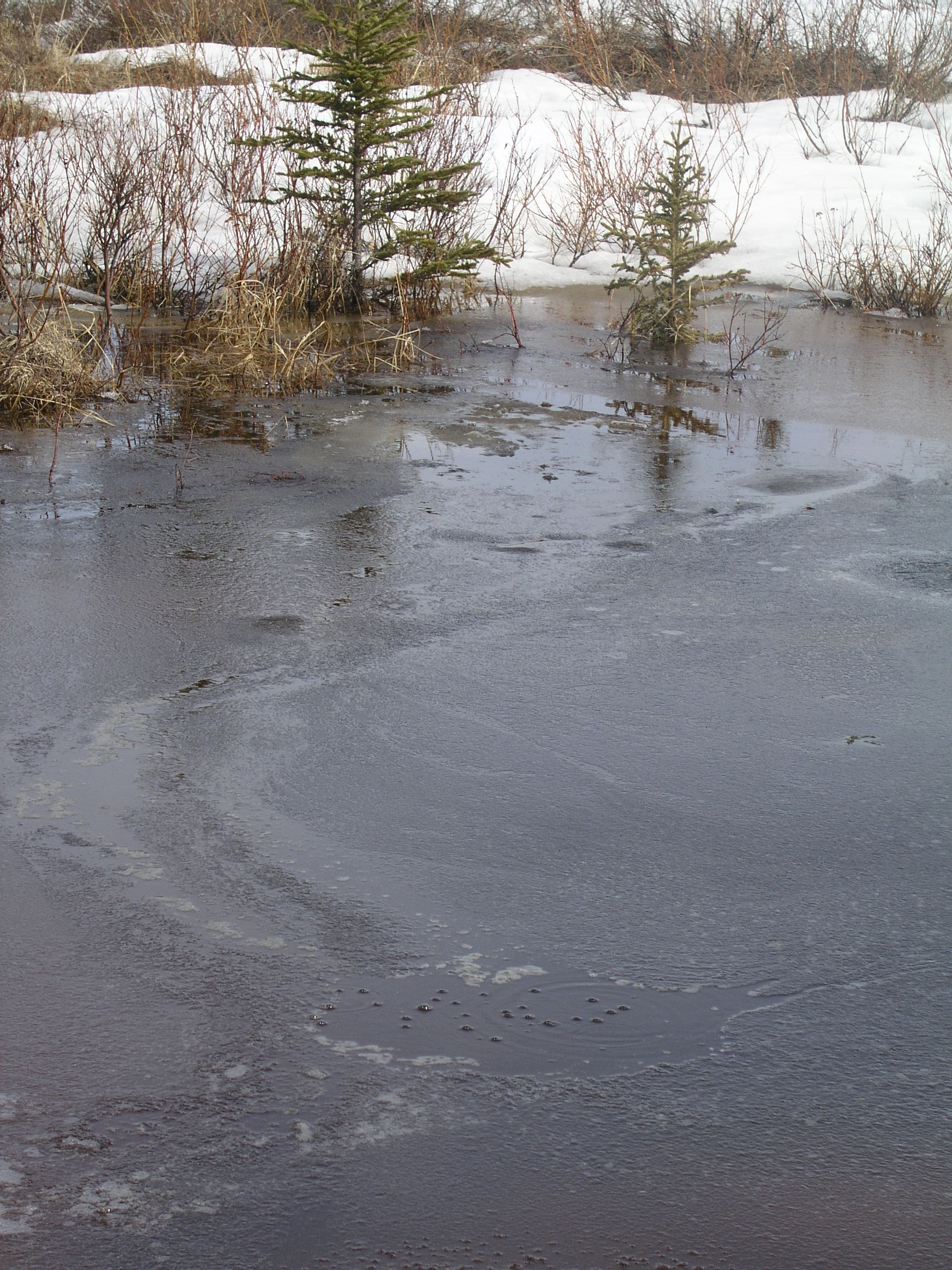
Methane bubbles escape from melting permafrost lake in Alaska (Pic. I.Quaile)
Long-term strategy
The Arctic Council has committed to developing a long-term strategic plan. “One of the things I felt strongly about when the US took over was that we needed to get the Council as a whole to be thinking in more than two-year increments”, Balton said. “Many of the issues concerning the Arctic are longer term. And the Council must find a way to think in longer-term. So that will happen. I expect two years from now we will be finalizing the long-term strategic plan for delivery to ministers in 2019, and probably look ahead at least ten years. “
So what effect will the change of US administration have on that? Some of the journalists listening to the briefing seemed skeptical about the idea that nothing appears to have changed, although the new new administration has hugely different policies. Again, this could well be just a matter of time:
“I think it’s fair to say that there has been no fundamental change in the way that the US is participating in the AC yet. This administration like past administrations may wish to put its own stamp on US Arctic policy. That may occur at some point. But it has not happened yet.”
Monitoring a rapidly changing Arctic
In response to a question about ocean acidification, the US ambassador described the increase in ocean acidification by 30% worldwide as “staggering” and said it was quite clearly caused by CO2 emissions.
There are not enough platforms in the Arctic to monitor this fully, he said, describing it as “one of our ambitions” to change that.
That brings us back to the crucial role played by US bodies, especially the National Oceanic and Atmospheric Administration (NOAA) and the National Aeronautics and Space Administration (NASA) in monitoring the planet.
Today, more than thirty leading Florida scientists published an open letter to President Trump, coming out strongly against White House’s proposed cuts to the earth sciences programs at NASA and NOAA. They call on the President to recognize climate change and resulting sea level rise, which is, of course, of existential importance to Florida in particular.
Concern is mounting in the scientific community that the new administration will try to silence efforts to educate the public on climate change.
Christina DeConcini, Director of Government Affairs at the World Resources Institute, whom I interviewed recently about the Trump administration’s climate and environment policies, said in a statement on today’s letter:
“The proposed budget cuts are an affront to the integrity of science and a large body of crucial work on the impacts of climate change that increasingly damage the United States. As the most vulnerable U.S. state to sea level rise, Floridians know this very well; it persistently threatens their infrastructure, communities and homes.
“Research from NOAA and NASA is foundational for assessing and effectively responding to disruptive flooding and costly extreme weather damages.”

Satellite data is revolutionizing our knowledge of ice. (Pic. I.Quaile, Tromso)
Science first
In the letter, the scientists write:
“American scientists have historically been at the forefront of scientific discoveries and innovation. America should invest heavily in our effort to understand our homeplanet and be aware of how physical changes will impact industry and society.”
They make a powerful plea for continuing support for NOAA and NASA:
“NASA and NOAA Earth science programs monitor and understand changes in our water resources and our soil. They track the conditions that affect the food and medicines we get from the oceans. These conditions impact agriculture, our military, businesses, and major industries. It is imperative to support programs that explore our planet – at NOAA and NASA and across the government. The work of NOAA and NASA is vital to life on Earth and must be continued”, the scientists write.
“NASA and NOAA’s work capture the history and the present state of the oceans, land, fresh water bodies, and atmosphere. They make it possible for us to observe changes to the planet we live on, from the vantage point of space.
For example, NASA satellites are responsible for providing the first global measurements of aerosols in our atmosphere and for understanding ozone. NASA satellites from the GRACE and ICES missions discovered unexpected rapid changes in Earth’s great ice sheets (…)”
So there we have it. Ultimately, the work of the Arctic Council cannot be separated from the issue of climate change and scientific monitoring.
Perhaps it was fortunate that the US Presidency of the Arctic Council coincided with the Obama period in office, where some decisions were taken in the interests of the region.
It will be up to Finland to direct operations for the next two years, from May onwards. But, clearly, regardless of what happens in the Arctic Council, the overall policy of the new US administration will have a key impact on what happens in the Arctic.
The latest SWIPA, (Snow, Water, Ice and Permafrost in the Arctic) report on the cryosphere will be presented to the ministerial gathering in May. It is unlikely to make happy reading. Climate change will have to be a major factor. And given the Trump administration’s policies so far on that issue, the work of the Arctic Council will not be able to carry on regardless.
“Cheers” to a cool Arctic in 2017
As 2016 draws to an end, the shortest day has passed in the northern hemisphere, and it should normally be a “cool” time of the year, in more ways than one, especially in the Arctic. But with temperatures at a record high, sea ice at a record low and feedback loops springing into action, the Arctic is hotting up – and I wish I could say the same for efforts to halt climate change.
Ice expert Jason Box tweeted this morning:
North pole near or at melting, strange given 24 h darkness there now, cold space aloft… is all about heat inflow from south @PolarPortal pic.twitter.com/r5C4i28vKR
— Jason Box (@climate_ice) December 23, 2016
Meteorologist Scott Sutherland writes on Dec. 22nd:
“(…) North Pole temperatures have climbed to 30oC hotter than normal for this time of year.
(…) Now, in late December, in the darkness of the Arctic winter, air temperatures at the North Pole have actually reached the freezing point, as recorded by weather buoys floating within a few degrees of the pole. As of the morning of Thursday, December 22 (3 a.m. EST), the International Arctic Buoy Programme (IABP), operated out of the University of Washington, recorded temperatures from these buoy up to 0oC or slightly higher.”
“(…) Right now, Arctic sea ice extent is at the lowest level ever recorded.”
Arctic in need of tlc?
It looks like the Arctic is urgently in need of some tlc – or maybe intensive care would be more fitting.
The Arctic Report Card for 2016 recently published by NOAA should have set alarm bells ringing. Based on environmental observations throughout the Arctic, it notes a 3.5 degree C increase since the beginning of the 20th century. The Arctic sea ice minimum extent tied with 2007 for the second lowest value in the satellite record – 33 percent lower than the 1981-2010 average. That sea ice is relatively young and thin compared to the past.
A “shrew”d indicator of Arctic warming
Let me quote what are described as the “Highlights”:
“The average surface air temperature for the year ending September 2016 is by far the highest since 1900, and new monthly record highs were recorded for January, February, October and November 2016.
After only modest changes from 2013-2015, minimum sea ice extent at the end of summer 2016 tied with 2007 for the second lowest in the satellite record, which started in 1979.
Spring snow cover extent in the North American Arctic was the lowest in the satellite record, which started in 1967.
In 37 years of Greenland ice sheet observations, only one year had earlier onset of spring melting than 2016.
The Arctic Ocean is especially prone to ocean acidification, due to water temperatures that are colder than those further south. The short Arctic food chain leaves Arctic marine ecosystems vulnerable to ocean acidification events.
Thawing permafrost releases carbon into the atmosphere, whereas greening tundra absorbs atmospheric carbon. Overall, tundra is presently releasing net carbon into the atmosphere.
Small Arctic mammals, such as shrews, and their parasites, serve as indicators for present and historical environmental variability. Newly acquired parasites indicate northward shifts of sub-Arctic species and increases in Arctic biodiversity. “
Getting the message across
The NOAA website sums it up in a video, saying:
“…Rapid and unprecedented rates of change mean that the Arctic today is home to and a cause for a global suite of trillion dollar impacts ranging from global trade, increased or impeded access to land and ocean resources, changing ecosystems and fisheries, upheaval in subsistence resources, damaged infrastructure due to fragile coastlines, permafrost melt and sea level rise, and national security concerns.
In summary, new observations indicate that the entire, interconnected Arctic environmental system is continuing to be influenced by long-term upward trends in global carbon dioxide and air temperatures, modulated by regional and seasonal variability.”
Margaret Williams, the managing director for WWF’s US Arctic programme had this to say:
“We are witnessing changes in the Arctic that will impact generations to come. Warmer temperatures and dwindling sea ice not only threaten the future of Arctic wildlife, but also its local cultures and communities. These changes are impacting our entire planet, causing weather patterns to shift and sea levels to rise. Americans from California to Virginia will come to realize the Arctic’s importance in their daily lives.
“The science cannot be clearer. The Arctic is dramatically changing and the culprit is our growing carbon emissions. The report card is a red flashing light, and now the way forward is to turn away from fossil fuels and embrace clean energy solutions. Protecting the future of the top of the world requires us to reduce emissions all around it.”
Sack the teacher, kill the messenger?
That was her response to the Arctic Report Card. In my school days, the report card was a business to be taken seriously. A bad report meant you were in trouble and would have to smarten up your act or you would be in big trouble with mum and dad.
The question is – who gets the report, and who has to smarten up their act?
This one should make the governments of this world speed up action on mitigating climate change and getting ready for the impacts we will not be able to halt.
Then again, they could just try to get rid of the messengers who come up with the bad news. If your kid’s report card is bad, do you try to improve his performance – or get rid of the teacher who came up with the negative assessment – based on collected data?
I am concerned that the administration in the wings of the US political stage could be more likely to do the latter. As I wrote in the last Ice Blog post, the new Trump administration is threatening to cut funding for climate research. The proposed new Cabinet is well stocked with climate skeptics.
Concern about research
Financial support for the Arctic Report Card is provided by the Arctic Research Program in the NOAA Climate Program Office. Its preparation was directed by a “US inter-agency editorial team of representatives from the NOAA Pacific marine Environmental Laboratory, NOAA Arctic Resarch Program and the US Army Corps of Engineers, Cold Regions Research and Engineering laboratory.
Yereth Rosen, writing for Alaska Dispatch News, quotes Jeremy Mathis, the director of NOAA’S Arctic research program and one of the editors of the report card.
“The report card this year clearly shows a stronger and more pronounced signal of persistent warming than in any previous year in our observational record”.
“We hope going into the future that our scientists and researchers still have the opportunity to contribute and make possible the summary that we’re able to present. So we have every intention of continuing to publish the Arctic Report Card as we have in the past and pulling together the resources and the right people that allow us to do that”.
Livid and acrimonious
The debate over President Obama’s announcement that he was making a vast area of the Arctic Ocean off-limits to drilling for oil or gas, shows the dilemma of our times – and .. which could influence the living conditions on our planet for generations to come.
Erica Martinson, writing for the Alaska Dispatch News, provides interesting insights into the debate for those of us who do not live in Alaska.
She quotes Alaska’s Republican Congressman Don Young, saying he used “livid language” in his response. Obama’s move means “locking away our resources and wuffocating our already weakened economy”. He goes on “Alaska is not and shuld not be used as the poster child for a pandering environmental agenda”.
Ooh. Livid indeed.
She also quotes Republican Senator Dan Sullivan as describing the move as “one final Christmas gift to coastal environmental elites”. So would those be the indigenous communities being forced to relocate because climate changes are destroying their homes, Senator?
The administration, on the other hand, says it is protecting the region from the risk of a catastrophic oil spill, Martinson writes.
It seems to me that Obama’s parting gift goes rather to the “Alaska Native communities of the North Slope” who “depend largely on the natural environment, especially the marine environment, for food and materials”, and to the many endangered and protected species in the area, “including bowhead and fin whales, Pacific walrus, polar bear and others”.
What about the Paris Agreement?
But as well as that regional aspect, the decision not to open up new regions to drilling for oil and gas is in line with the global need to cut fossil fuel emissions to halt the warming of the world.
Jamie Rappaport Clark, CEO of “Defenders of Widife”, puts it:
“It marks the important recognition that we cannot achieve the nation’s climate-change goals if we continue to expand oil and gas development into new, protine environments like the Arctic and Atlantic Oceans”.
This is not just about Alaska, not just about the Arctic, but the future of the planet as a whole.
The World Meteorological Organization (WMO) says 2016 is on track to be the hottest year on record. According to UN estimates, the global temperature in 2016 was 14.88 degrees C – 1.2 degrees higher than before the industrial revolution began in the mid-19th century.
In an article for the New York Times on December 22, Henry Fountain and John Schwartz quote NOAA’s Arctic Research Program director Jeremy Mathis.
“Warming effects in the Arctic have had a cascading effect through the environment” “We need people to know and understand that the Arctic is going to have an impact on their lives no matter where they live”. That includes the oil-industry-friendly and climate skeptical team that is set to enter the White House in the New Year,
So when I propose a toast to a cool Arctic in 2017, I am not just thinking of my friends in the high north. For all our sakes, we have to kick our fossil fuel habits, save energy and cut the emissions which keep the giant refrigerator that helps make our world a viable place to live well chilled.
Alpine ice – no more than a memory? New archive of ice cores
Alpine glacier – endangered species? (Pic: I.Quaile)
It was with mixed feelings that I read an article drawn to my attention by a colleague earlier in the week.
“Protecting Ice Memory” is the subject –a description of a new project to create a “global archive of glacial ice for future generations”.
I am generally enthusiastic about all projects concerning ice. The worrying thing is the reason why this project has been deemed necessary.
History melting
“The goal is to build the world’s first library of ice archives extracted from glaciers which are threatened by global warming”. There we have it. Another frightening acknowledgement of the extent and speed of global change.
How sad that our human-induced warming is threatening our ice, especially here in the European Alps, where we do not have as much ice as in some other parts of the globe. How good that we have the technology to save some of it for posterity. How frustrating that while we also have the technology to shift to a zero-carbon economy and stop the ice melting, we are not actually doing it anything like fast enough.
Starting on Monday August 15th and carrying on until early September, an international team of glaciologists and engineers (French, Italian, Russian and American) will be travelling to Mont Blanc, in particular to the “Col du Dome” glacier area, which is 4,300 metres or 14,108 feet up. They will be drilling the first ice cores for the “Protecting Ice Memory” project.
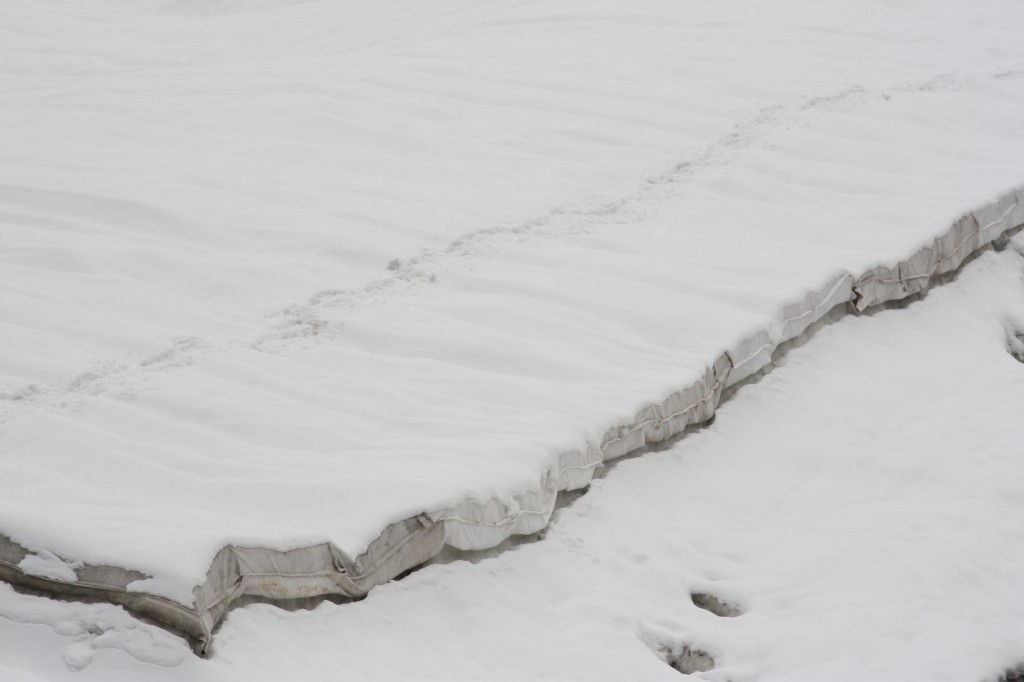
Some glaciers are being covered in summer to stop them melting, this one I saw in Switzerland. Proved ineffective. (I.Quaile)
Saving the cores
The team will be coordinated by Patrick Ginot from the French Research Institute for Development (IRD), working within the UGA-CNRS Laboratory of Glaciology and Environmental Geophysics (LGGE), and Jerome Chappelaz, director of Research at the CMRS and working within ths same laboratory.
The team will be extracting three ice cores each 130 metres long. These will be taken down by helicopter and taken to the LGGE in Grenoble. Clearly they will have to kept very cold during the process.
In 2019 (why only then, I wonder?), one core will be analysed to start a database which is ultimately to be made available to the whole world scientific community.
The other two will be transported by ship to ANTARCTICA. Yes, you read correctly. There, they will be taken on tracked vehicles across the high plateaus to be stored at the Concordia station, which is run by the French Paul-Emile-Victor Polar Institute (IPEV) and its Italian partner, the National Antarctic Research Programme (PNRA)
In the long term, dozens of ice cores are to be stored in a snow cave at -54° Celsius, which the project describes as “the most reliable and natural freezer in the world”.
The Mont Blanc glacier is the first step. The next will be carried out in 2017 on the Illimani glacier in the Bolivian Andes.
Global operation
It seems other countries with access to glaciers are also hoping to join the project, including Germany, Austria, Switzerland, Brazil, the USA, Russia, China, Nepal and Canada. That sounds like a real mega-project.
I have commented often enough here on the Ice Blog on the dwindling ice in my own favourite hiking territory in the German and Swiss Alps. Last week it was the turn of the New Zealand Alps to be the focus of this rather sadly motivated attention.
The scientists who came up with the project had the idea after observing a rise in temperatures on several glaciers. At ten year intervals, they say the temperature near the glaciers on the Col du Dome and Illimani in the Andes has risen between 1.5 degrees and 2 degrees (Those figures sound familiar from somewhere…)
“At the current rate, we are forecasting that their surface will undergo systematic melting over the summer in the next few years and decades. Due to this melting and the percolation of meltwater through the underlying layers of snow, these are unique pages in the history of our environment which will be lost forever”, says the project description.
The scientists compare their project to the Svalbard Global Seed Vault on the Norwegian Arctic island of Spitsbergen. Before I read that part, this very comparison had already come to my mind. I had a rare opportunity to visit that vault a couple of years ago.
Svalbard to Antarctica
But one of the very worrying things in that connection is that even that “secure coldspot” has in turn been affected by permafrost melt – at least at a level close to the surface, which caused damage to the entrance area in the early stages.
Will the Svalbard vault ultimately have to be moved to the even colder Antarctic at some point in the future, one might wonder?
I remember a visit to the Alfred-Wegener Institute in Bremerhaven, Germany’s polar agency. One of the highlights was a look into the laboratory where ice cores are processed. Clearly, these provide invaluable evidence of how our planet and life on it have developed. Climate and environmental archives of a quite unique nature.
“Our generation of scientists, which bears witness to global warming, has a particular responsibility to future generations. That is why we will be donating these ice samples from the world’s most fragile glaciers to the scientific community of the decades and centuries to come, when these glaciers will have disappeared or lost their data quality”, says Carlo Barbante, the Italian project initiator and Director of the Instutite for the Dynamics of Environmental Processes – CNS, Ca’Foscari University of Venice”. What a sobering thought – and a daunting task.
And what an inspiring campaign to rescue what it seems we will not be able to save in time in the natural world.
Projects like this cost a lot of money. It is relying on private sponsors. The current European project has funding. The Université Grenoble Alpes foundation is now running a campaign to fund the Bolivian expedition.
Here’s hoping the money will be forthcoming.
And here’s hoping the international community will speed up efforts to halt global warming before we have to create archives to try to document all the ecosystems, species and habitats we are losing faster than we can count them.
Paris: A COP-out for Arctic Peoples?
As I write, the climate negotiations have been extended into Saturday. Same procedure as every year? While I still hope the seemingly never-ending bickering will result in a document which will at least signal the end of the fossil fuels era, I cannot help feeling a sense of sadness and regret, that this is all way too late for the Arctic, as I discussed in the last blog post. And I wonder how all this feels to indigenous folk living in the High North, as they see their traditional lifestyles melting away.
On a recent edition of DW’s Living Planet programme, Lakeidra Chavis reported on the effect of melting permafrost on indigenous communities in Alaska. Chatting to a colleague in between times about the story, she told me how moved she was to hear how skulls had been washed up in a river as the permafrost at a burial site thawed.
Climate change impacts the present, future – and past
I had a kind of déjà vu feeling. Back in 2008, in those early days of the Ice Blog, I travelled out to Point Barrow, the northernmost point in the USA, with archaeologist Anne Jensen. We visited the site where a village had had to be re-located because of coastal erosion, with melting permafrost and dwinding sea ice. She told me how she was called up by distraught locals in the middle of the night and asked to help recover the remains of their ancestors before they were washed into the ocean. My colleague here in Bonn was surprised to hear that I had conducted that interview back in 2008. How could this have been known at that time already, yet so little publicized?
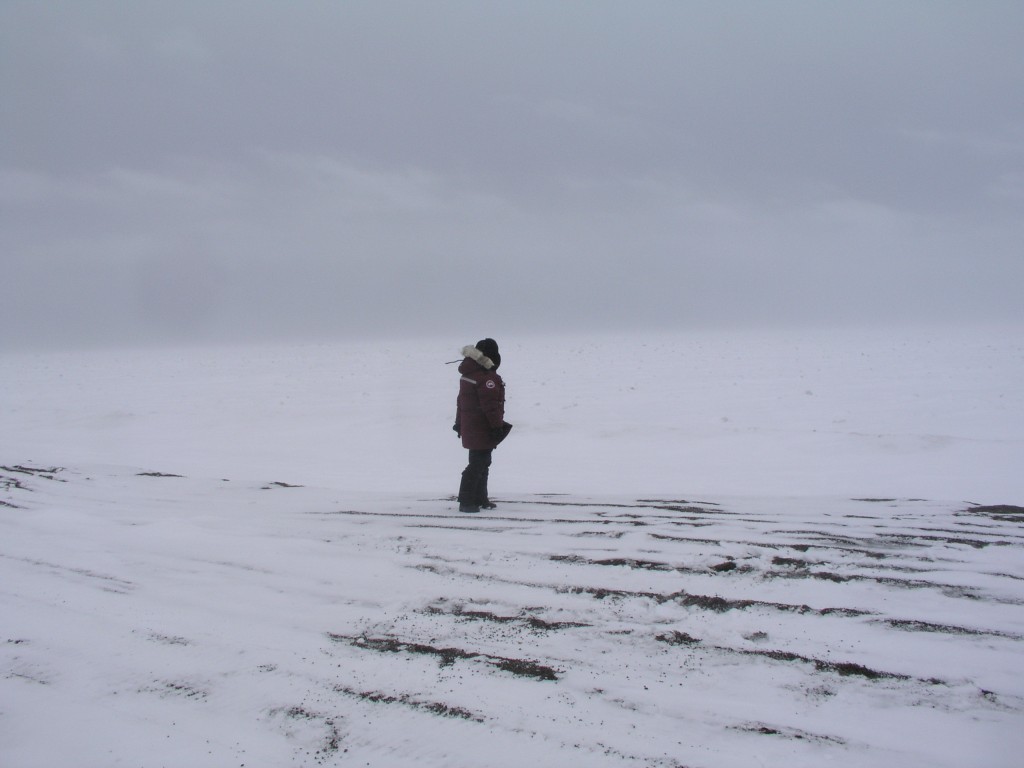
Climate change impacts: Jensen at the site of a lost Inupiat village at Point Barrow, 2008 (Pic.: I.Quaile)
Victims or culprits?
While a lot of attention is focused (and rightly so) on the impacts on developing countries, Asia, Africa, rising sea levels, this is an issue a lot of people know very little about. In an article for Cryopolitics Mia Bennet puts her finger on an interesting aspect of all this. The Arctic indigenous peoples are living in industrialized, developed states. That gives them an interesting status, somewhere between being victims and perpetrators of climate warming.
“A discourse of victimization pervades much Western reporting on the Arctic”, she writes. A lot of people in the region tend to blame countries outside the region for climate change. She quotes a study in Nature Climate Change in which researchers found that emissions from Asian countries are the largest single contributor to Arctic warming. But she notes that gas flaring emissions in Russia and forest fires and gas flaring emissions in the Nordic countries are the second two biggest contributors. And these industries are often supported by locals, not least because of the jobs and prosperity they bring.
This brings me back to some encounters I had during that trip to Alaska in 2008 – and others since, with Inuit people employed in the oil sector. They were reluctant to accept that the industries that provided their livelihoods could ultimately be literally eroding the basis of their cultures. Russia, the USA, Canada, Norway – are all countries involved in oil and gas exploitation. Some northern regions are highly dependent on the industries which are warming the climate.
“And for their part, Arctic countries must realize that reducing emissions begins at home on the region’s heavily polluting oil platforms and gas flaring stacks – not in Paris”, says Mia Bennet.
All up to Paris?
The sad truth is that even the two-degree target – or the 1.5 currently being debated – will not have much of an impact on Arctic warming.
Mia Bennet puts it bluntly. “Regardless of whether a positive or negative outcome is reached in Paris at COP 21, it will not dramatically affect the Arctic.”
A delegation of indigenous leaders from the Arctic countries is in Paris at the talks. Both the Inuit Circumpolar Council and the Saami Council have sent delegates, with the aim of highlighting the consequences of a warming climate for the polar regions.
Council representatives are from three distinct Inuit regions: Canada, the USA and Greenland. The Chukotka region of Russia also has a substantial Inuit population, who are not directly represented in Paris, but belong to the Council. The Saami Council has representatives from Finland, Russia, Norway and Sweden. Both sets of delegates are attending as observers, without voting rights.
In a position paper, Inuit Circumpolar Council Chair Okalik Eegeesiak of Canada stresses the Inuit’s deep concern about the impacts of climate change on their cultural, social and economic health.
She describes the Arctic’s sensitive ecosystem as a “canary in the coal mine for global change”. Following that metaphor, the canary must be close to suffocating.
The Inuit representatives in Paris are appealing for stronger measures to keep global temperature rise below 1.5 degrees C. They stress that the land and sea sustain their culture and wildlife, “on which we depend for food security, daily nutrition and overall cultural integrity”.
But ultimately, in a world where altruism seldom plays a part, it may be their other argument – the role of the Arctic in influencing the global climate system – that convinces negotiators of the need to work against global warming. With increasing knowledge and awareness of the extent to which the Arctic influences global processes and thus weather and climate all over the globe, the willingness to take measures to prevent further deterioration of the cryosphere is likely to increase. Whether it will be in time is another question. Any negotiator in Paris who has taken a brief moment off to read this – remember, we are not talking about a remote region with a small population. We are all in this together.




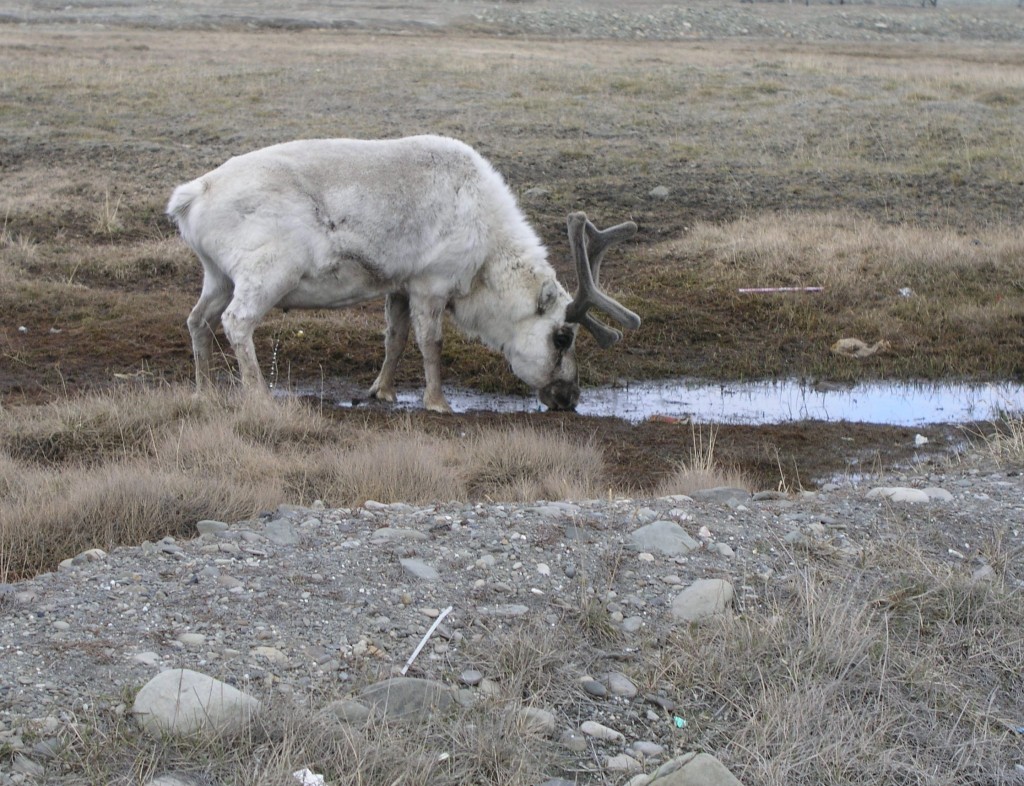
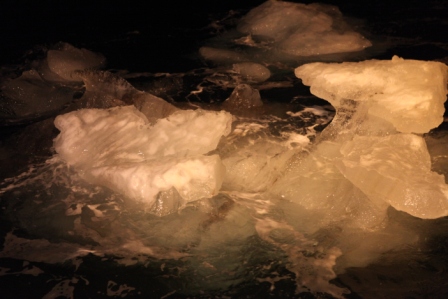
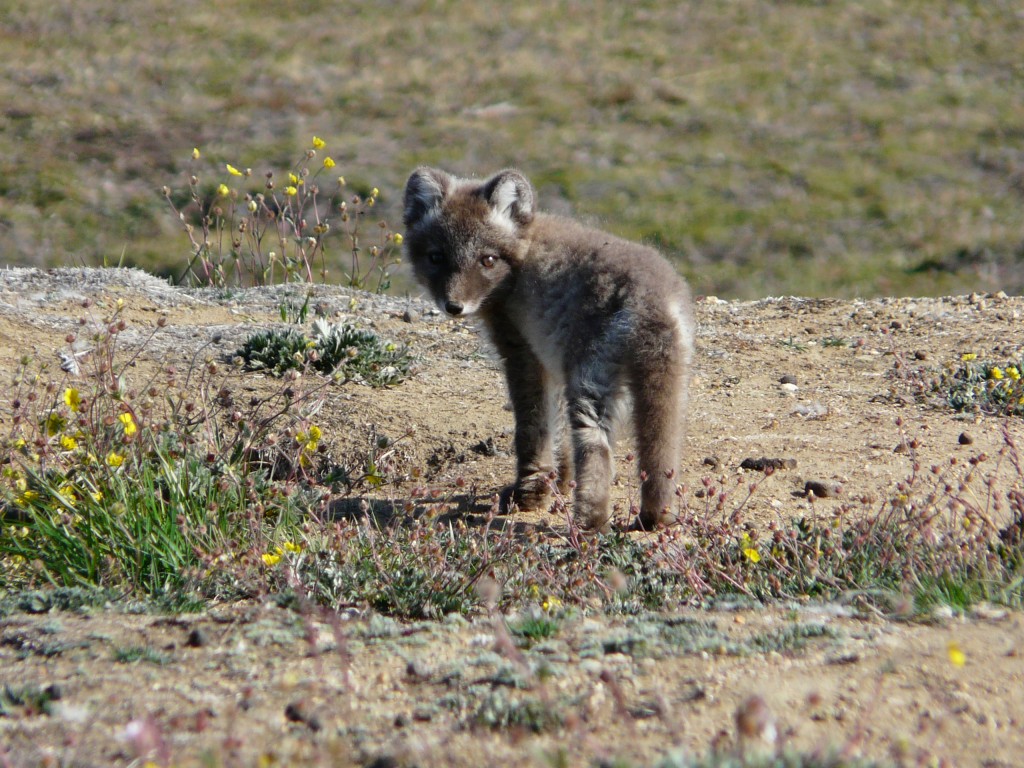
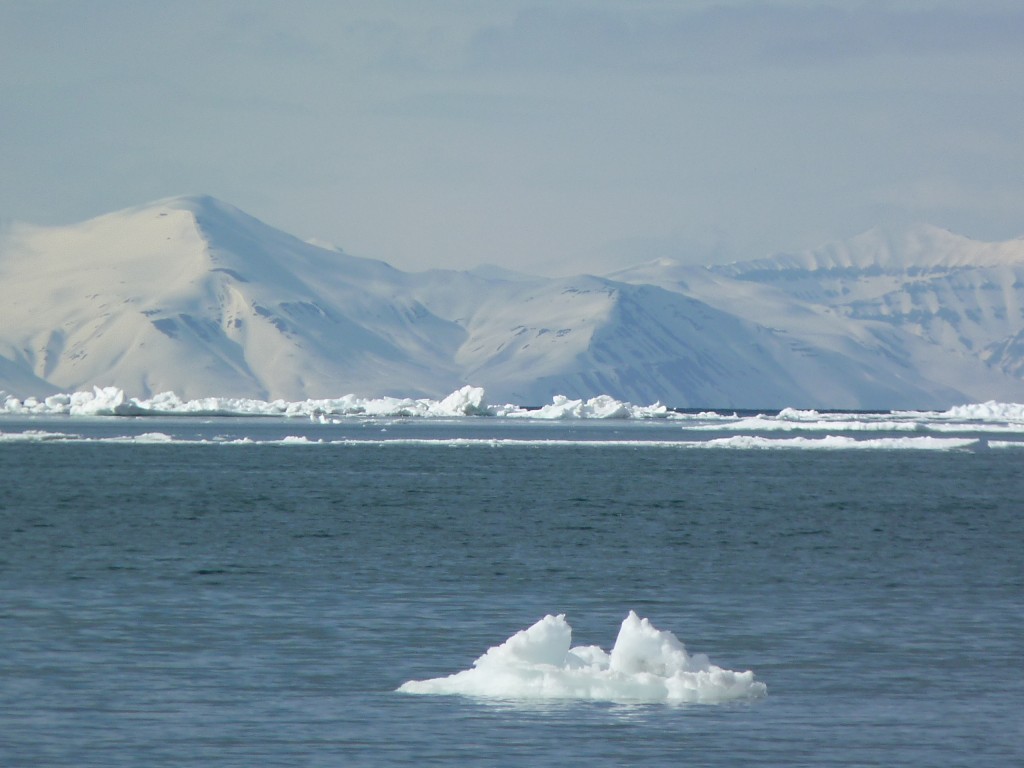
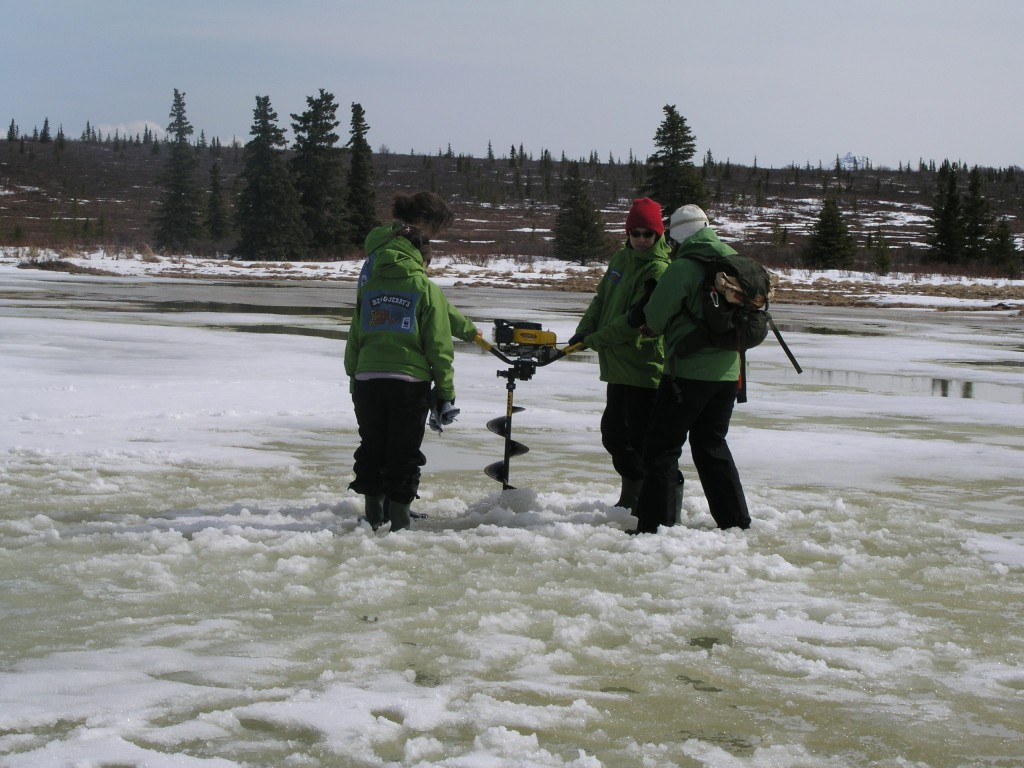
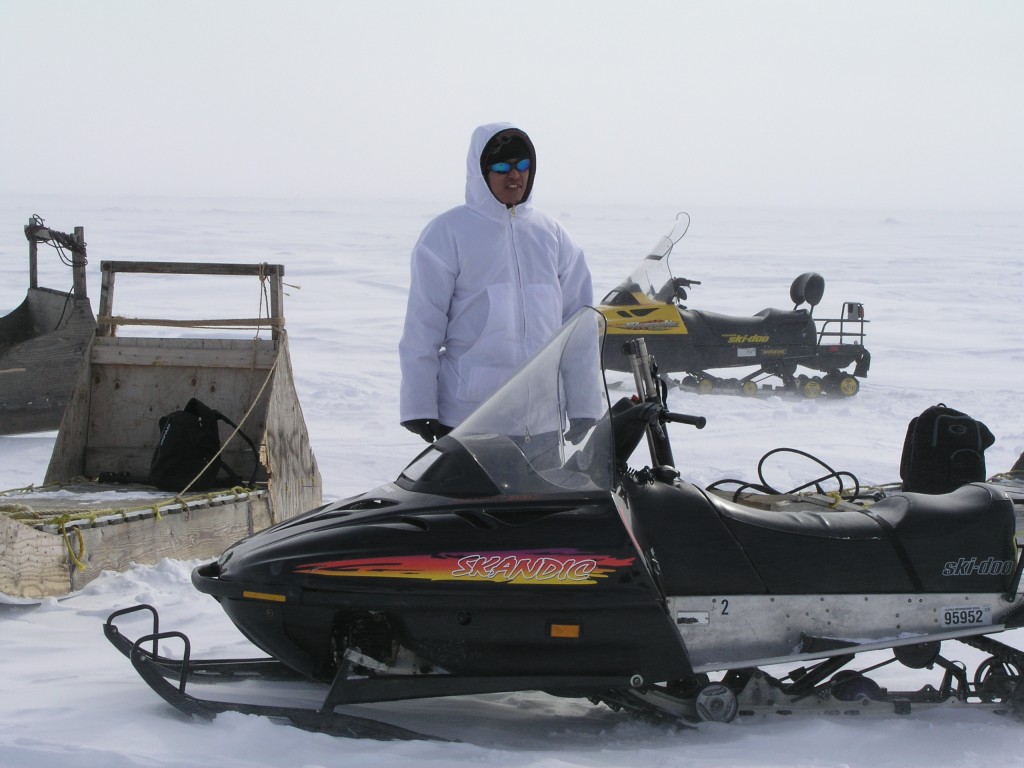
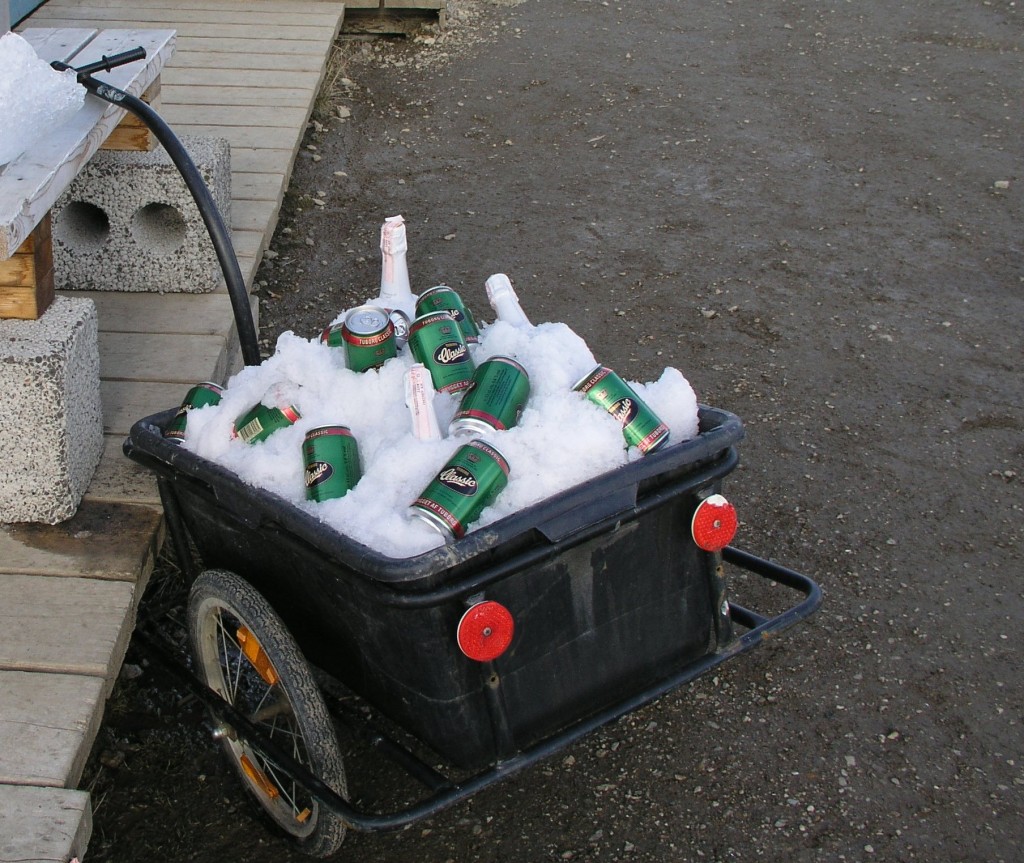
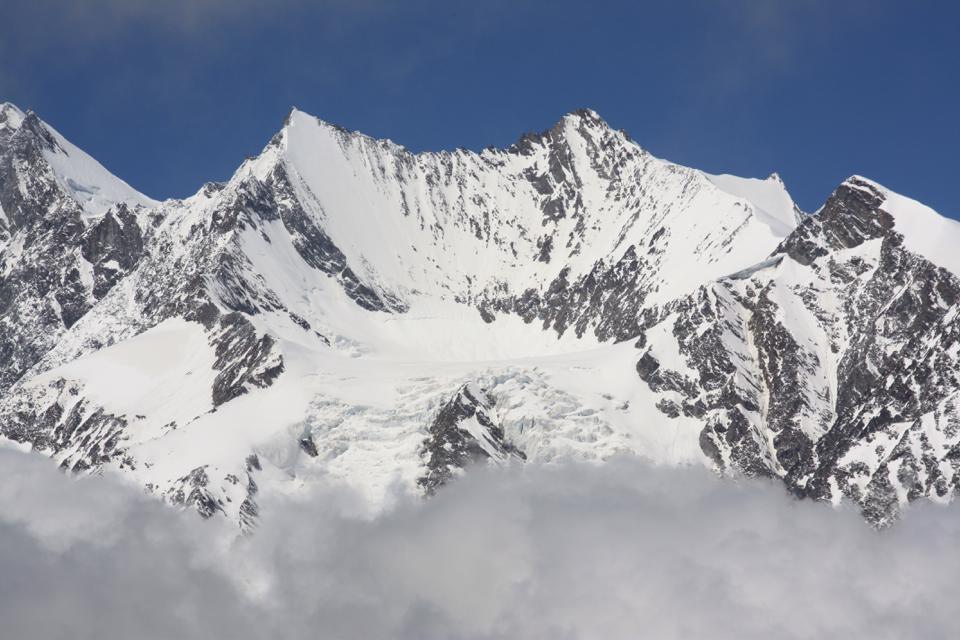
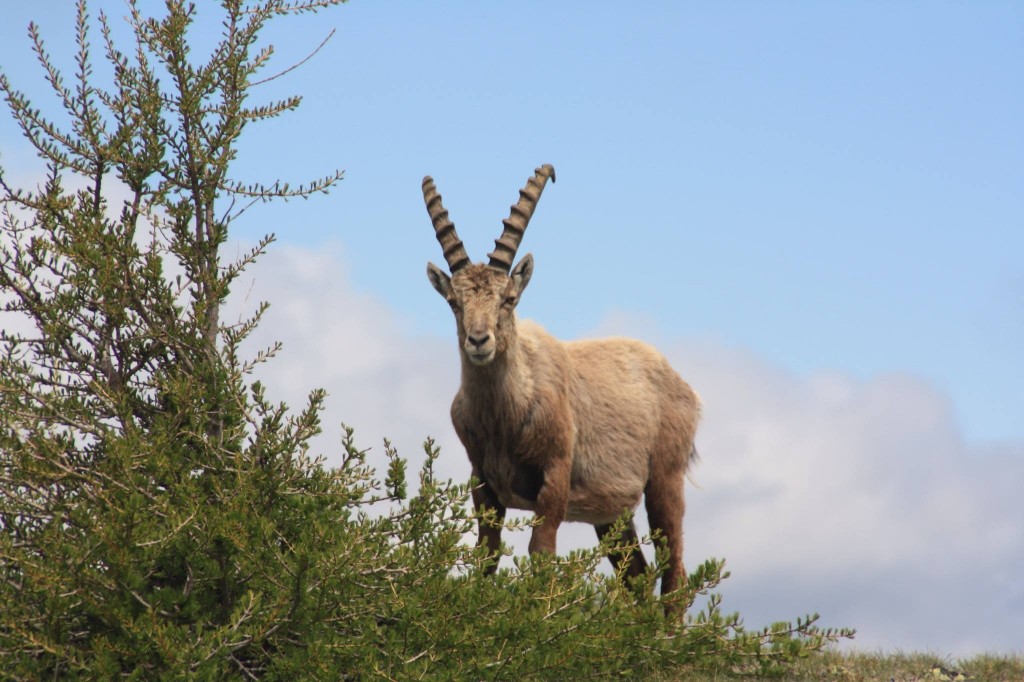
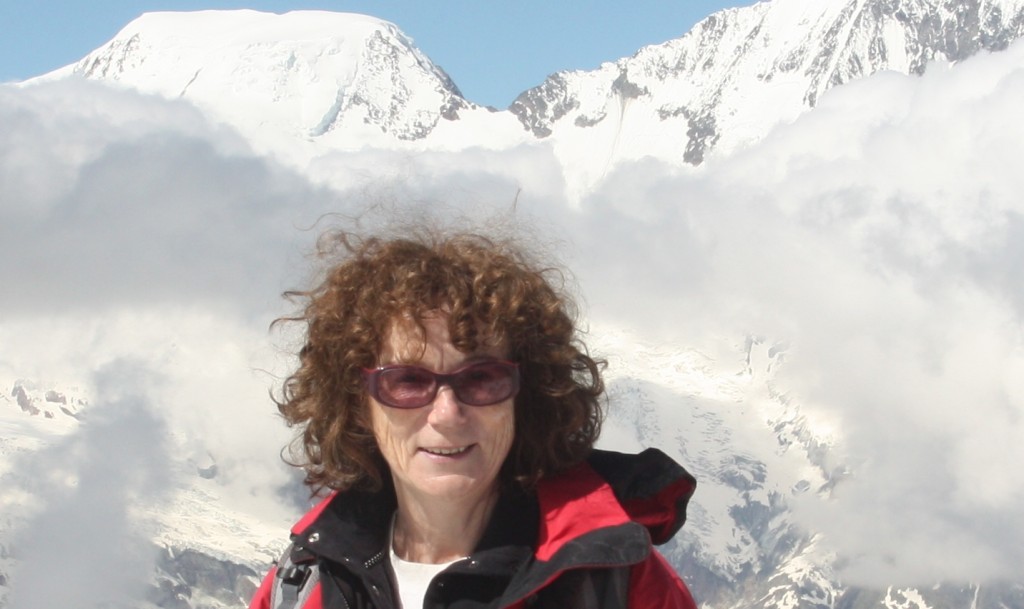
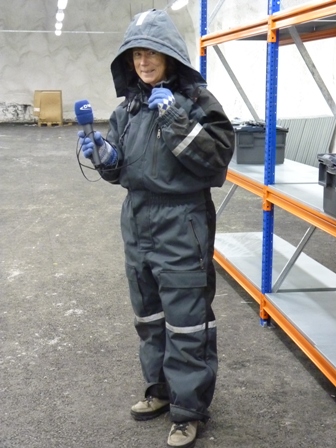
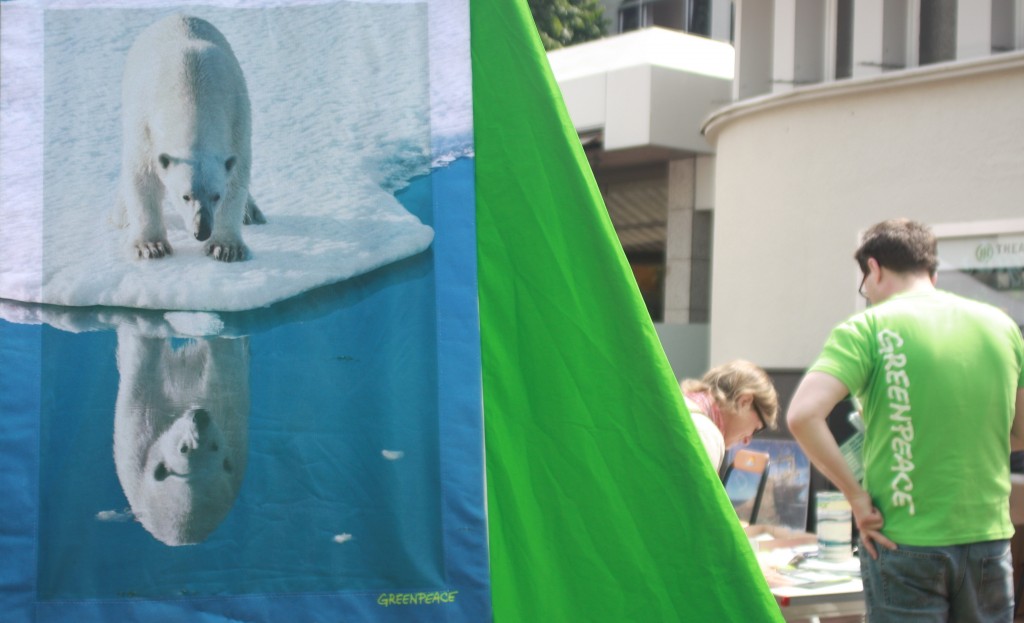
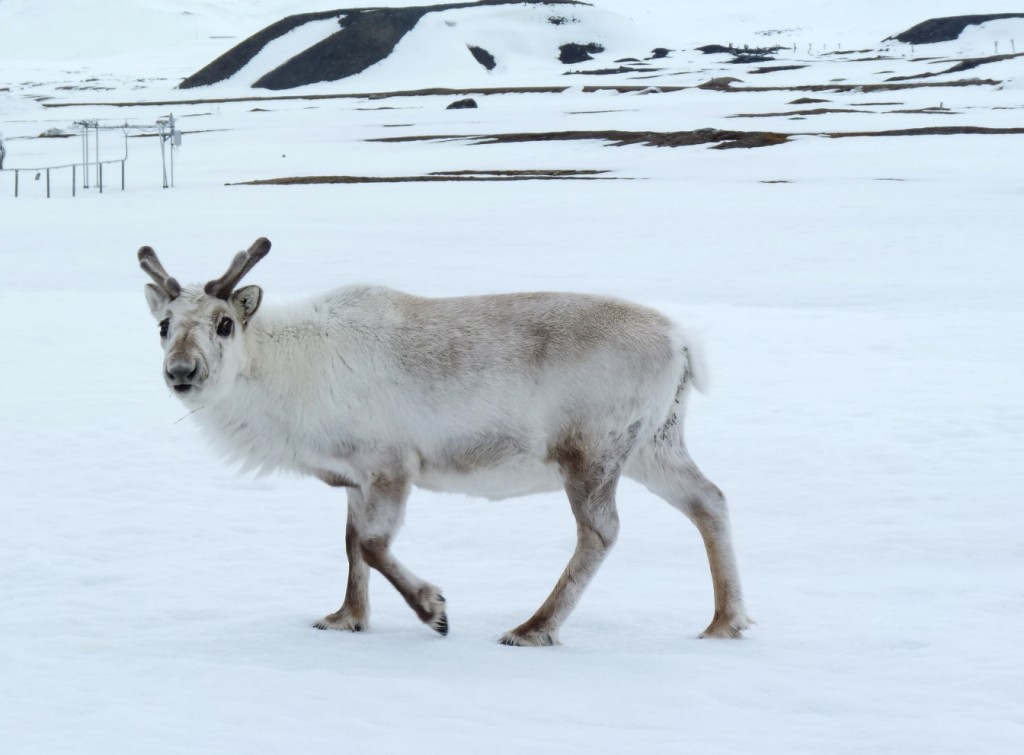












Feedback